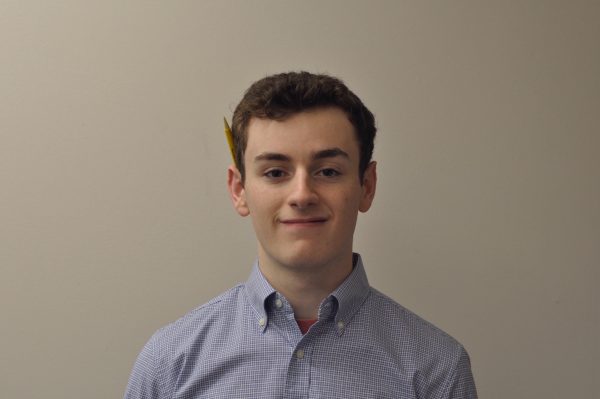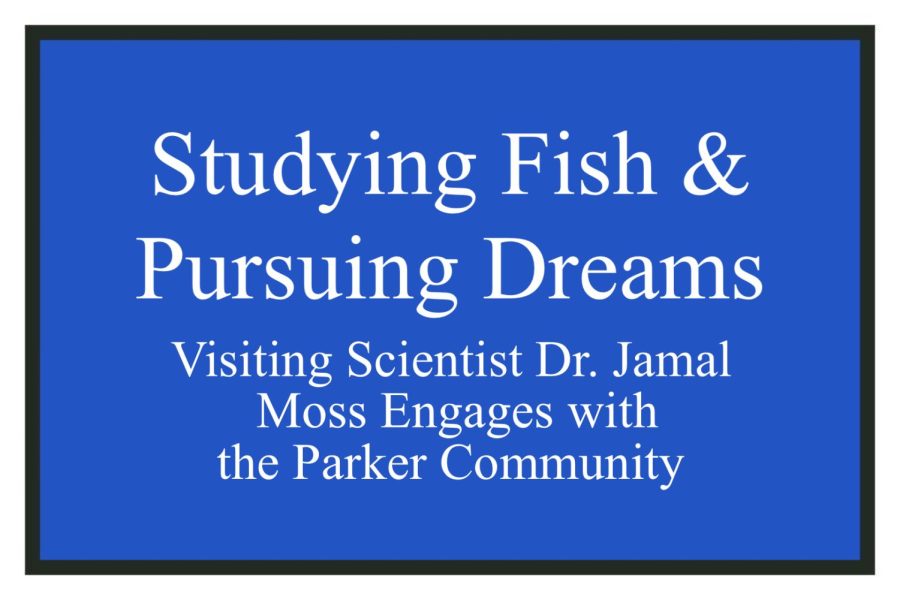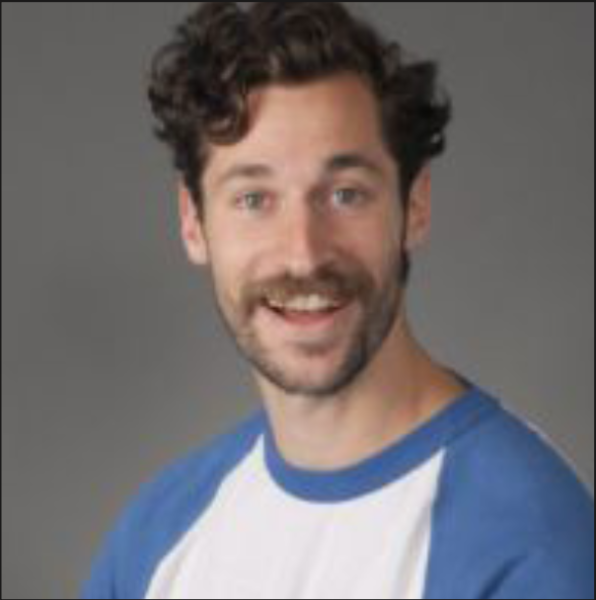Studying Fish and Pursuing Dreams
Visiting Scientist Dr. Jamal Moss Engages with the Parker Community
Photo credit: The Parker Weekly
Studying Fish & Pursuing Dreams – Visiting Scientist Dr. Jamal Moss Engages with the Parker Community
Dr. Jamal Moss traveled from Juneau, Alaska to Chicago to give a talk in the Harris Center on Tuesday, May 2, titled “Realizing Your Dreams: How a Kid from Chicago Found His Path Studying Fish and Marine Ecosystems in Alaska.” The presentation lasted an hour and 21 minutes.
Moss is the 15th Annual Robert A. Pritzker Visiting Scientist/Inventor/Engineer in Residence at Parker. He has been visiting Parker classrooms over Zoom to discuss his work as it related to various curricula including the Climate Science and Activism course in the Upper School.
Moss is the deputy director of Auke Bay Laboratories in Juneau, Alaska which is one of the National Oceanic and Atmospheric Administration (NOAA) Fisheries. NOAA has many pieces including weather service, ocean service, a satellite office and an office that works with affiliated ships and airplanes. He has also worked as a fisheries research biologist with the Ecosystem Monitoring and Assessment Program at the Alaska Fisheries Science Center.
The Science Department Chairs were connected to Moss by then Assistant Principal Ruth Jurgensen who is Moss’s cousin and suggested that he could be the visiting scientist. Last year the decision was made to select him for the 2021-2022 school year “We decided this year we wanted to do something environmental science,” Upper School science teacher George Austin said.
A student at the University of Chicago Laboratory Schools, Moss grew up in the neighborhood of Hyde Park in Chicago. “I’ve been in love with fish since I can even remember,” he said, adding that he grew up fishing for salmon in Wisconsin and in Lake Michigan.
After high school graduation, Moss went to Connecticut College and pursued medicine. After taking his MCATS and beginning the process of looking for Medical School, he recalls having a moment of realization in a mock-interview. Moss became aware that he was lying about his interests and needed to find a different path.
Moss then embarked on a series of unfortunate events including being broken up with and living with his bandmate’s parents. He also pursued business and worked in investment banking, but found once again that it was not his passion either.
Finally, Moss got to the point where he was ready to go all out for his true passions and he went to the University of Washington to eventually receive his PhD in fisheries and aquatic science.
Moss has now worked for 18 years conducting research on and studying the fish of Alaska, specifically the Gulf of Alaska and the Bering Sea. “Pretty much for my whole career I’ve been a fisheries oceanographer and fish physiologist working in ecosystems and stakeholder engagement,” he said.
At his presentation on May 2, Moss described one example of a project that he has worked on. This was the Gulf of Alaska survey from 2010 to 2017 which started as a study funded by the National Pacific Research Board.
Moss was promoted to be the deputy director at Auke Bay Laboratories about two months ago and he now oversees and supports scientists working on research and surveys.
Living in Alaska was not something that Moss had ever expected but he had always been “fascinated with the nature shows” of Alaska and was intrigued by the idea of visiting and enjoying what it had to offer. In graduate school Moss says he was studying in Alaska and he “sort of fell in love with the landscape and the people and just all of it.” Then, while getting his PhD, he made the decision to pursue opportunities in Alaska.
For his event on May 2, Moss chose to present with a structure he has never utilized before. The presentation was meant to be personal and vulnerable as Moss fused stories of scientific work with his individual stories of growth and following his “heart and dream.”
He chose this structure because he knew that not all of his high schooler audience members would want to be scientists and he wanted to take this chance to express both information about careers in science as well as personal accounts of being “brave enough to just do it,” “it” being the pursuit of your true passions.
Moss noted that his work has a strong correlation with climate change and he hopes to give helpful insight on what his work has to say about these global problems. In his presentation he discussed climate change factors that are a part of his work. These range from the timing of algal blooms on sea ice to coastal erosion and habitat loss.
The presentation was followed by a question and answer period which featured inquiries from students and faculty attending both in person and over Zoom. Students asked about Moss’s work, and additional relevant climate change factors.
In addition to Moss’s presentation, while in Chicago he visited the 6th grade, the 7th grade, and 9th grade biology students. Moss also met with the Upper School ROV Robotics team.
Earlier in the year, Moss was able to connect with some other Parker classes over Zoom and through pre-recorded videos including the cross-departmental Climate Science and Environmental Politics class available to Upper School students.
When picking the visiting scientist for this year, the Science Department Chairs were not sure whether COVID-19 protocols would allow for Moss to visit campus in person. This made Moss’s living in Alaska seem more reasonable as Zoom meetings would likely be utilized either way.
Austin said the science department was also interested in the sociological elements of Moss’s work. One example of this is Moss’s work relating to indigenous people’s relationship with the environment and the way their areas are being affected by unsustainable modern practices.
According to Austin, in the past few years, the science department has intensified its focus on using the visiting scientist program to present diversity in science. “ We’ve made it a point to make sure that we have a larger representative body of scientists that we are showing to our school community.”
Austin said that learning from scientists is a valuable experience for high school students. “Then the interaction does not get filtered by the teachers having to do the interpretation of things,” he said.
Auke Bay Laboratories hosts a handful of youth outreach programs for students, some of which Moss has contributed to. However, Moss has not yet had the chance to engage with high schoolers about his work and he was “really looking forward to it.”
Senior and member of the Climate Science and Environmental Politics class Alex Carlin enjoyed being able to hear directly from a scientist whose work had such significant overlaps with her coursework. Moss was able to tell students in that class about how the behaviors and characteristics of Alaskan fish have direct connections to climate change.
“I appreciated learning about his path to where he is today,” Carlin said. She is not interested in working in science but still learned a lot from his career and the importance of his work. Carlin also commended Moss’s ability to bring high school students into his very advanced research with his explanations.
Moss was impressed with the high schoolers and their ability to thoughtfully engage with his content using the information they had been studying. “I was excited to really feel and sense their enthusiasm and interest for those topics,” he said.
Towards the end of his presentation on May 2, Moss became choked up as he gave his closing messages that urged students to follow their passions and be true to what they really love working on. He hoped that they would not wait to find their correct path but rather follow their honest interests “from the get-go.”













